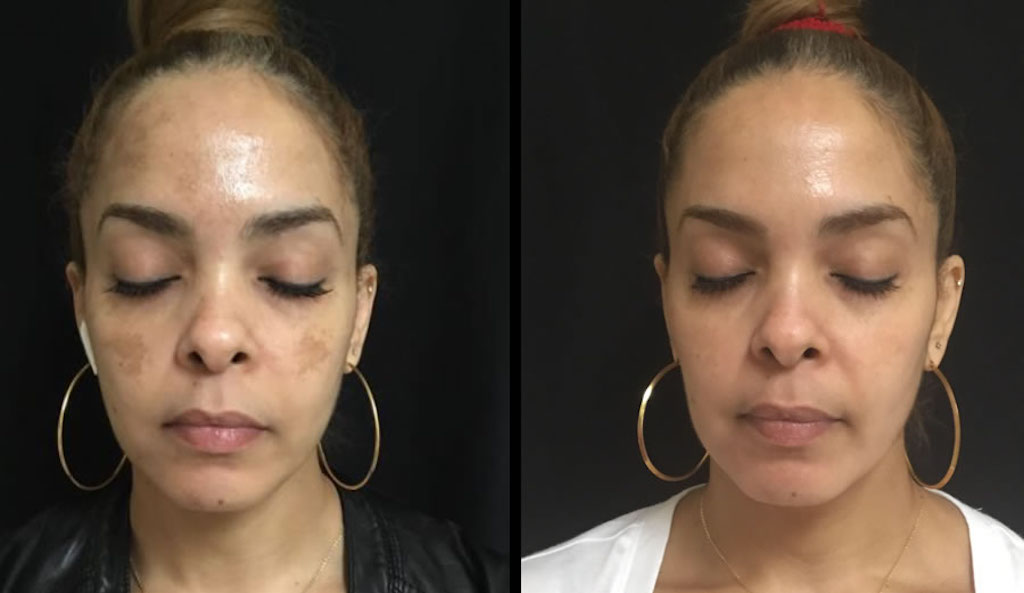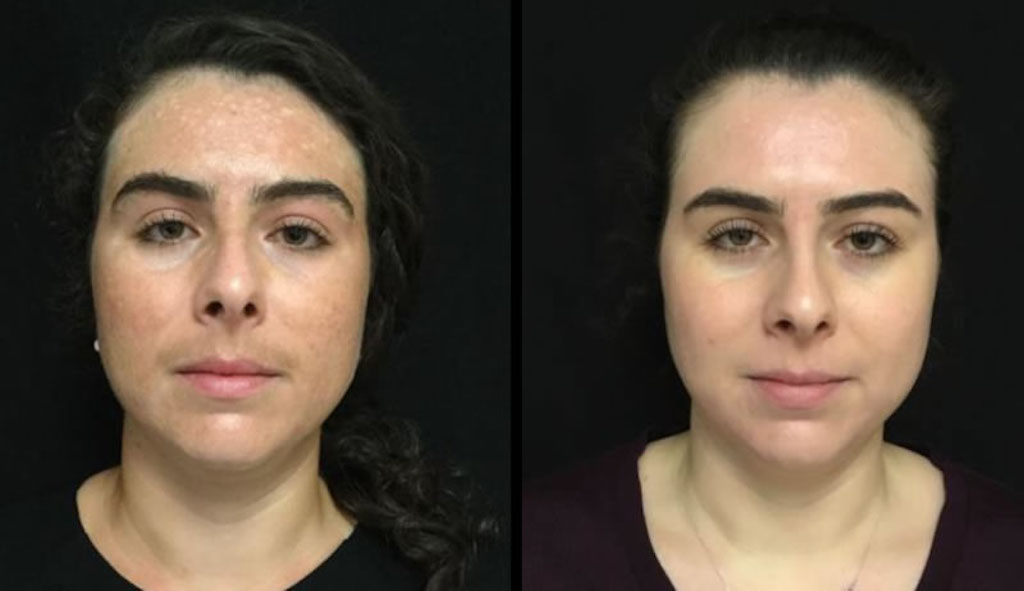
Photo Credit: Photo courtesy of Dr. Michele GreenDr. Michele S. Green is a board-certified dermatologist. Upper East Side patients and those from the surrounding areas of New York City flock to her practice for a variety of cosmetic dermatology treatments. A graduate from Yale University, with an MD from Mount Sinai Medical School in NYC, Dr. Green treats some of the most discerning, demanding women and men in the world, with issues ranging from premature skin aging to hyperpigmentation, rosacea, acne, and skin cancer. Dr. Green chats with Haute Beauty about Melasma and her gold standard to treat it.
Melasma is an extremely common skin condition with an average of 200,000 cases in the United States every year, according to the Mayo Clinic. The skin discoloration and dark spots that come with melasma not only affect self-confidence but with the wrong treatment, the symptoms can easily be worsened.
Haute Beauty Expert Dr. Michele Green, New York City-Based dermatologist, is known to be one of the best dermatologists in the United States for treating melasma and disorders of pigmentation, and skin discoloration. Here, Dr. Green answers the most frequently asked questions in diagnosing, treating, and preventing melasma.
HB: What is melasma?
Melasma is a common skin condition that causes dark patches and discoloration on your face and chest. melasma predominately appears on the upper lip, the bridge of the nose, forehead, and cheeks. Melasma may also appear on sun-exposed areas of the forearms, neck, and shoulders. Patients with darker skin, such as those people who are Latin/Hispanic, African, Mediterranean, or Middle Eastern descent, are much more likely to suffer from melasma. Patients with white skin may develop melasma but it is much less noticeable

HB: What causes melasma?
There is not a clear understanding of what causes melasma. In general, melasma is caused by an increase in melanin, which are produced by the melanocytes that live in the skin. It is not known why these melanocytes are stimulated to make an overproduction of melanin. There are, however, certain triggers that are known to exacerbate melasma.
Genetics: Patients whose close relatives have melasma have a genetic predisposition to suffer from melasma and are more likely to develop it themselves.
Hormones: It has been found that the use of birth control pills, oral contraceptives, pregnancy, and hormone replacement therapy, can all trigger melasma to flare. This is why melasma is often referred to as the mask of pregnancy, due to an increased amount of melanin and hyperpigmentation occurring on the faces of pregnant women.
I often recommend discontinuing oral contraceptive pills in patients with melasma in order to improve the appearance of this skin disorder.
HB: How do you treat melasma?
Cosmelan® peels are my gold standard for treating hyperpigmentation and melasma.
The Cosmelan chemical peel decreases the skin’s natural melanin production by inhibiting certain enzymes, providing an even complexion. Cosmelan treatment involves a very versatile, dynamic process that is easily adapted to the needs of each individual patient.
The Cosmelan peel is a professional-grade mask that is left in place for a number of hours (depending on the degree of pigmentation and skin type). The cream is easily removed at home by the patient several hours later.
It will produce an initial “peeling” of the skin, which will leave the skin smooth and dramatically decrease the signs of facial pigmentation, lightening discolored areas. The patient returns three weeks later for a touch-up of Cosmelan® in order to treat any residual pigmentation.
Other in-office treatments:
- Clear and Brilliant a.k.a. “baby Fraxel”
- Microdermabrasion procedure
- Hydrafacial
Topical creams:
Increased strengths of hydroquinones are available by prescription through the office of Dr. Michele Green. MGSKINLABS, Inc.’s line of products carries both a 5% and 8% Hydroquinone, but in addition to that, a hydroquinone specially compounded with tretinoin for added exfoliating effects.
There are both over-the-counter skin lotions as well as prescription creams that treat the hyperpigmentation caused by melasma.
Other key ingredients used to fight melasma are:
- Kojic acid
- Retinoids
- Azelaic acid is derived from grains and brightens pigmentation. It is useful for the treatment of rosacea, melasma, and other skin disorders.
- Hydroquinones
- Vitamin C
- Vitamin K
- Glycolic Acid
HB: How do you prevent melasma?
Sun protection:
It is so important to practice complete sun protection and use sunscreen daily, with an SPF of 30 or higher. It is critical to avoid the damaging effects of these UV rays and prevent the recurrence of melasma after it is treated. Since melasma patients are much more sensitive to the sun, I recommend a combination of a chemical and a physical (mineral) sunblock.
Oral Medications:
Certain oral antibiotics, cardiac medications, and other photosensitizing medications can cause melasma or exacerbate its severity.
Skincare products:
Certain over the counter products and worsen the appearance of melasma.
To find out more about how you can treat melasma, contact Dr. Green online for an appointment or call 212-535-3088 to learn more about why Dr. Green is a trusted source for melasma treatment in New York City.
For more information, visit Dr. Brian A. Levine's social media:

























